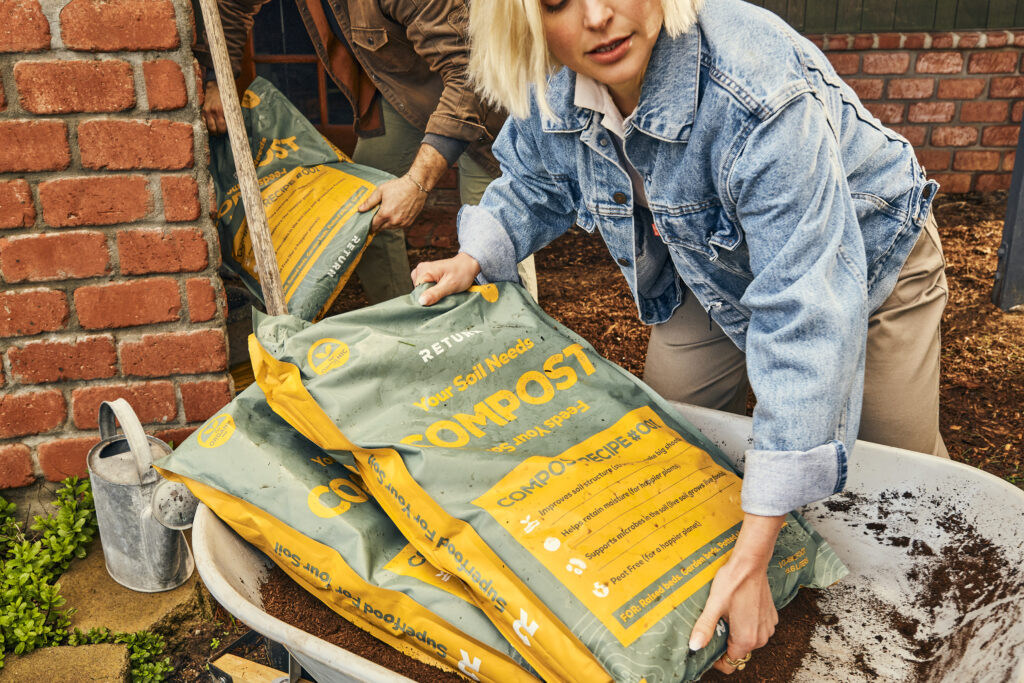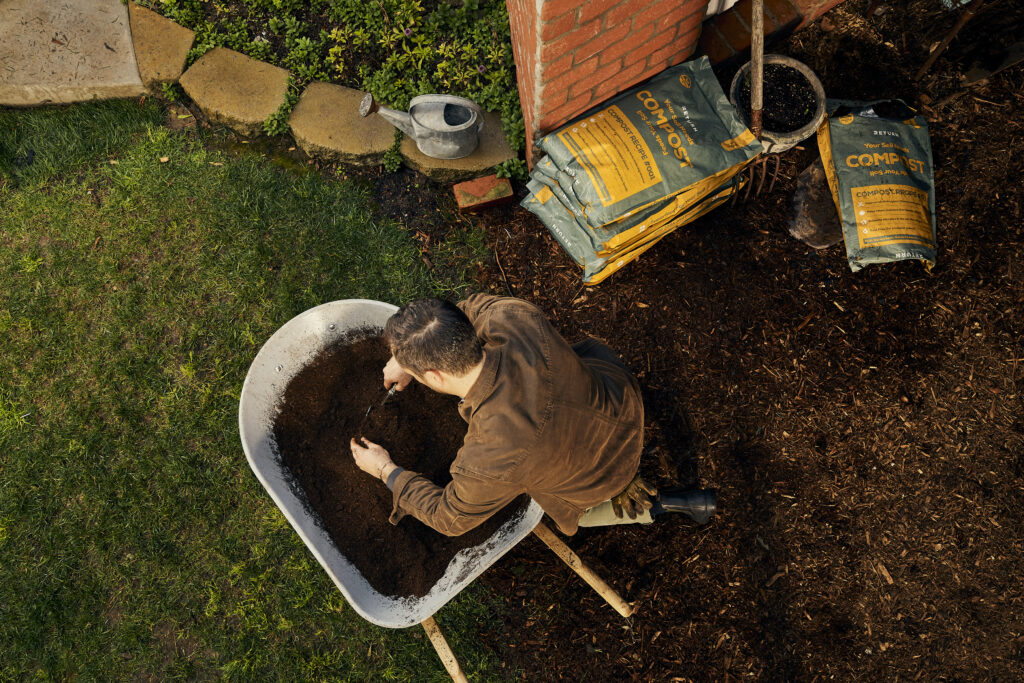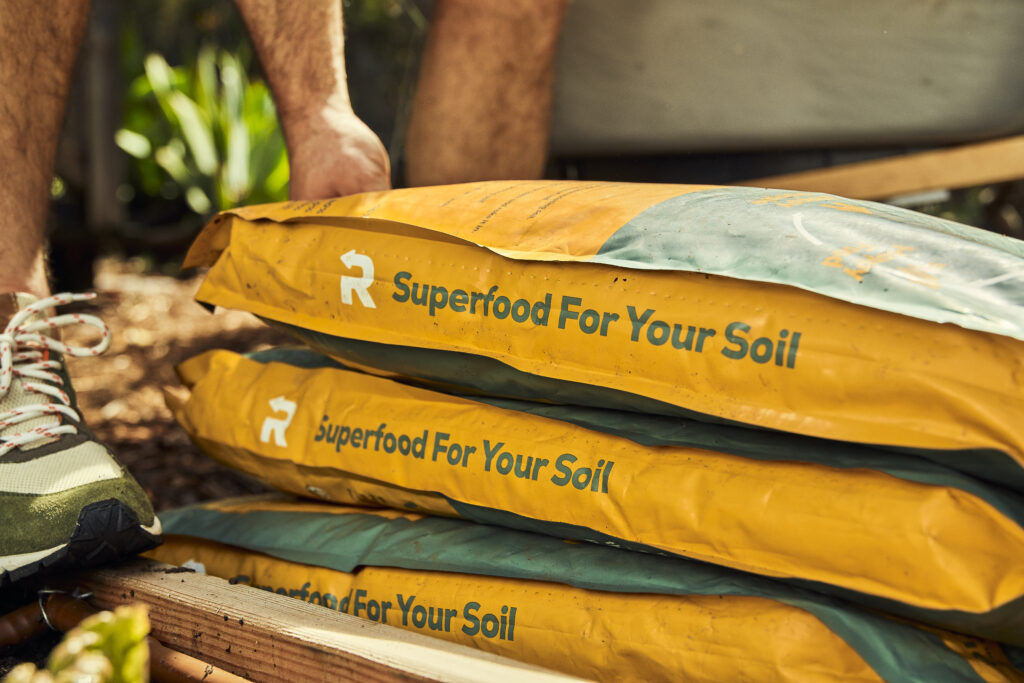Who needs compost, anyways?
“Composting? Isn’t that just a fancy way of saying ‘letting my food scraps rot in a bin’?” Well, you’re not entirely wrong, but compost itself is so much more than that. It is key in maintaining the health of your soil, the health of your plants, and ultimately your own health.
If that’s not enough, composting is also great for the environment. By diverting food and yard waste from landfills, we reduce the amount of methane (a potent greenhouse gas) that gets released into the atmosphere. Plus, composting helps build healthy soils that draw down and store carbon, reducing the amount of carbon dioxide in the air.
Now, some of you may be thinking, “But I don’t have the time or resources to make compost myself!”
Fear not, busy gardeners! While composting is a great way to recycle organic waste and create nutrient-rich soil, you can also purchase pre-made compost—a great option for those who are short on time or space to compost at home (we won’t tell anyone you didn’t make it yourself!)
Read on to learn why compost is crucial for the soil health of any successful garden. Also learn how and when to use it to help grow more nutrient-dense food.
…compost is crucial for the soil health of any successful garden.
What is compost? Poop, right?
Compost is a type of organic material that is made by breaking down waste materials through a natural process called decomposition. This is accomplished through the work of bacteria, fungi, and other microorganisms that thrive in a warm, moist, and oxygen-rich environment.
Most compost gets its nitrogen from organic waste. When the organic materials break down, they feed beneficial microorganisms and provide all the good stuff that plants need to grow—nitrogen, phosphorus, and potassium.
Compost also helps improve soil structure, making it easier for plant roots to grow and allowing for better water and air flow.
Additionally, it can help regulate soil pH levels, preventing plants from becoming too acidic or alkaline.
How do I use compost?
Now, let’s get to the good stuff: How to use it to grow better food!
The first thing to keep in mind is that not all plants are created equal when it comes to their compost. Some plants prefer nitrogen-rich compost, while others prefer compost with higher levels of phosphorus or potassium.
Generally speaking, leafy greens and other fast-growing veggies like lettuce and spinach benefit from more nitrogen-rich compost, while root vegetables like carrots and beets prefer compost with higher levels of phosphorus and potassium.
When it comes to actually applying it, here are a few basic ways:
- Dig it in: One of the easiest ways to use your compost is to dig it directly into your garden beds. Just spread a few inches of compost over the top of your soil and mix it in with a garden fork or tiller. This will help improve soil structure, add nutrients, and increase water retention.
- Use it as a top dressing: Especially if you don’t want to disturb your soil. Simply spread a layer of compost over the top of your soil (about an inch or so) and let it work its way in slowly over time. This is a great option for established plants that don’t need a lot of disturbance.
- Create a “compost trench”: Simply dig a trench in your garden bed and fill it with compost. Plant your vegetables directly on top—as the plants grow, their roots will work their way into the compost.
- Make compost tea: Feelin’ fancy? Make tea by steeping your compost in water for a few days and using the resulting liquid as a fertilizer—a form that can be easily absorbed by your plants.
- Make an amended soil: For container plantings, mix about one-third compost to two-thirds potting soil for an extra nutrient boost. However you choose, make sure to refer to on-pack instructions.

When’s the best time to apply compost?
Great question. The answer depends on many things, including the climate, type of garden, and compost. We’ll focus on prepared compost.
If you’re starting a new garden bed, you can apply a layer of prepared compost to the soil before planting to provide a rich, nutrient-dense foundation for your plants.
If you’re looking to rejuvenate an existing food garden bed, you can apply compost in the fall after the growing season has ended. This allows it to break down the organic matter over the winter and be ready for planting in the spring.
Fall is also an excellent time to apply compost because it helps to protect the soil from erosion and freezing temperatures.
In warmer climates, where the growing season lasts longer, it’s possible to apply compost in the spring or summer—providing a boost of nutrients to plants as they start to grow. This is generally the case with perennial flower gardens.
By applying compost at the right time, you can improve the health and productivity of your garden while reducing waste.
Great. I get it! Where can I get it?
Depending on your situation, experience, and needs, there are a few different ways to include compost into your growing efforts.
- Use a composting service: Some cities offer composting services where they collect your food scraps and yard waste and turn it into compost. Check with your local agencies to see if this is an option in your area.
- Worm or “vermicomposting”: Worms are nature’s composting machines. Harness their power in your own home with a worm bin. This is a great option for anyone with limited outdoor space.
- Buy pre-made compost: You can find bags of pre-made compost at your local garden center or nursery. This is a great option if you don’t have the space or resources to make your own. We’re partial to our Compost Recipe #001, available in select stores like Ace Hardware. It’s worth checking out.

So, whether you’re a seasoned gardener or just starting out, composting is a simple and effective way to improve soil health, reduce waste, and grow better food. So go forth and compost—and may your gardens be forever green (and deep-dark brown, and crumbly).








